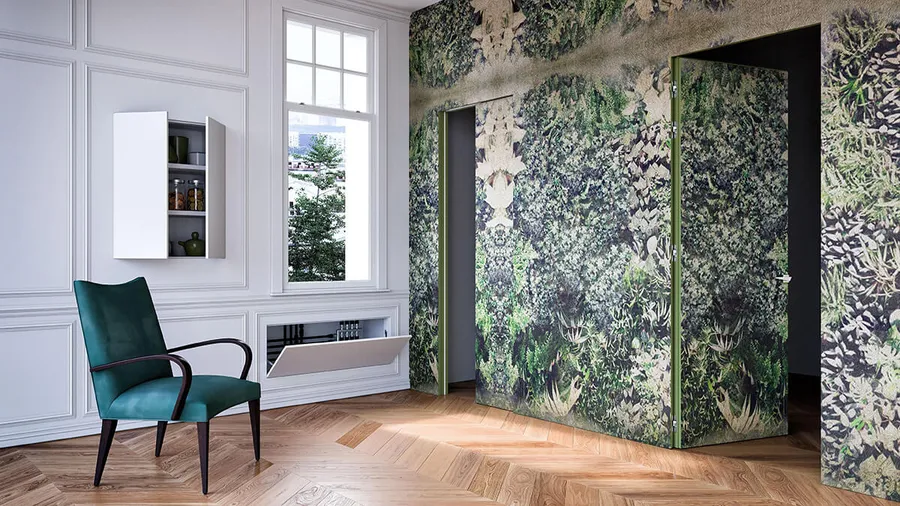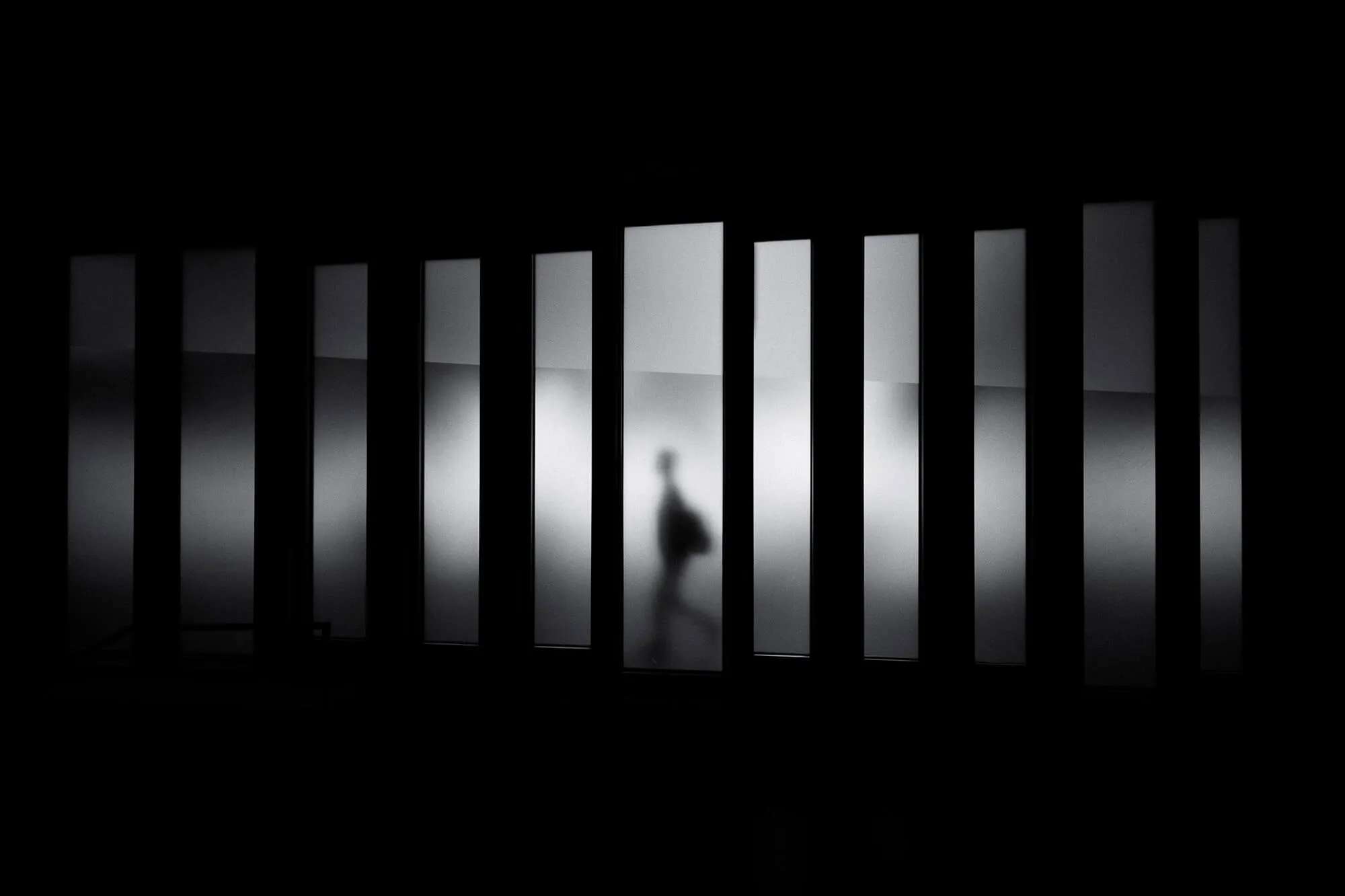Technical insights 09/03/2021
Covering a door with wallpaper
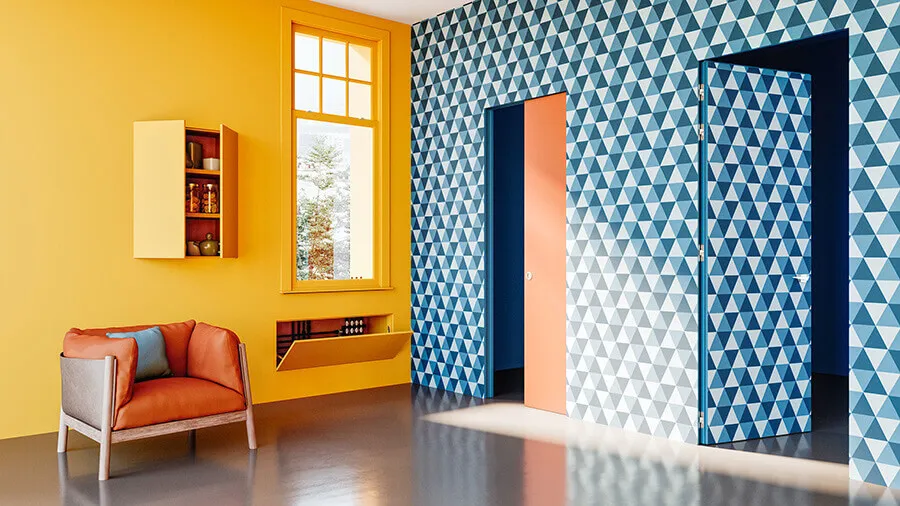
Covering a door with wallpaper is a task that stimulates creativity, sharpens our wits and offers us the possibility of creating totally customised environments.
A classic of the 70’s interior design tendencies that has recently come back into vogue is the use of wallpaper.
This technique offers an infinite variety of graphics, textures and materials that make room for creativity and thus meet all kinds of needs.

This type of wallcovering is not only a decorative element with a wide variety of patterns, but it also has useful technical features. Let's take a look at some examples.
Wallpaper is increasingly sought after in environments such as hotels or shops because it complies with fire safety regulations, it is easy to clean and, in the case of 3D wallpapers, it is possible to exploit a greater covering power to conceal wall imperfections. All these characteristics are accompanied by a rapid and very simple installation process, especially if using the new adhesive wallpapers.
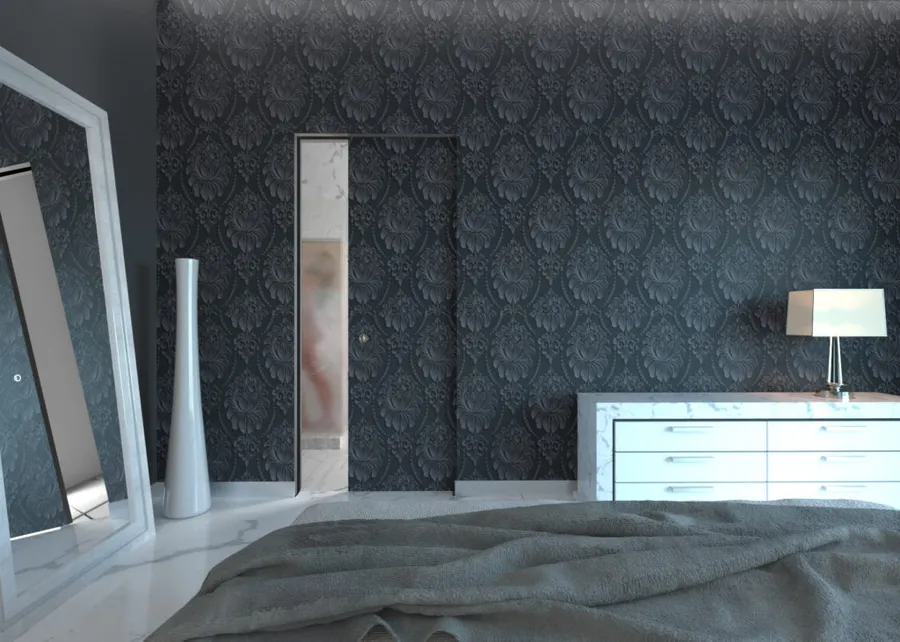
There is no doubt that wallpaper has become a product that offers effective solutions in the interior design universe.
The main advantages are the important decorative effect, the easy installation and consequent faster application, the ability to conceal uneven walls and the long-lasting characteristics. Quality wallpaper lasts longer than wall paint, which usually requires maintenance every three to four years.
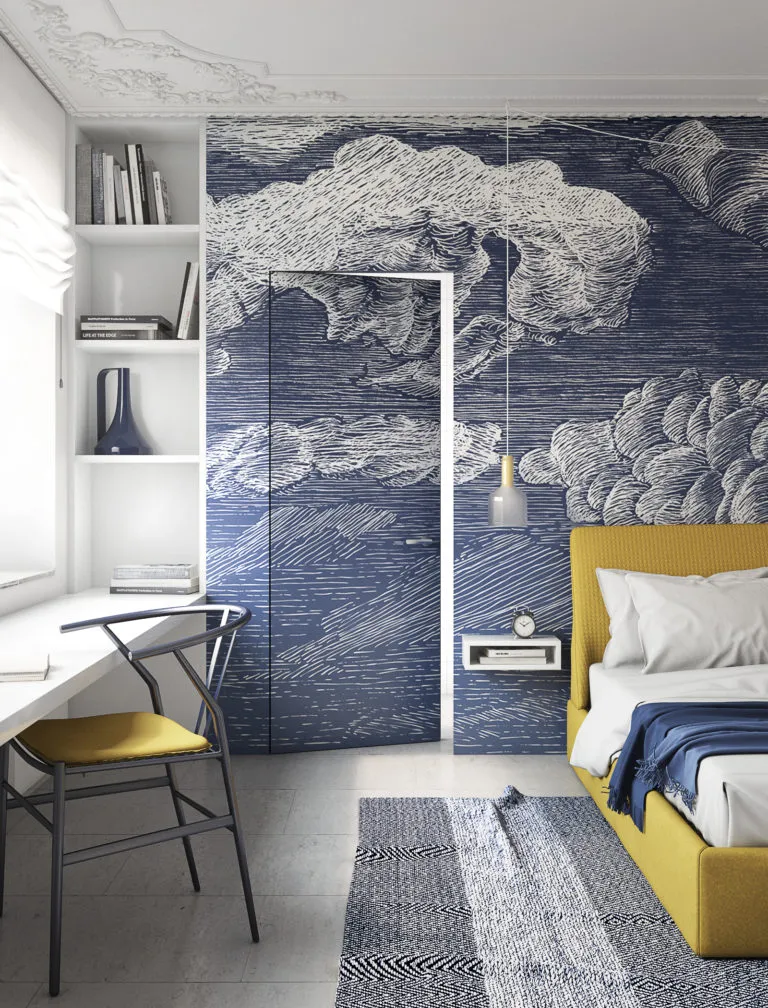
For all these reasons, it is not enough to talk just about wallpaper, but it is necessary to understand the several products available today. Let's take a look at the different types of solutions:
Natural paper: wallpaper made from natural fibres is called cellulose. This solution is highly appreciated for its resistance over time and for its ecological specifications as it is not made from plastic but obtained through the processing of wood.
Textile wallpaper/washable wallpaper: it consists on paper made of "non-woven fabric" also known as Nonwoven fabric. The visual effect of this material is very similar to "real" fabric, but it is cheaper and more resistant. The sheet is created by combining synthetic and natural fibres such as cotton, silk, jute, etc. It is an increasingly popular material on building sites because it allows the wall to "breathe”, preventing the formation of mould. Wallpaper’s water-repellent properties make it very easy to clean and its composition makes it resistant to high temperatures.
Vinyl cladding: This is a very high quality material that is often considered for domestic environments. It is fireproof, odourless, washable and consents the creation of large formats. Wallpapers with this composition can offer even more variety, mainly through the creation of 3D effects.
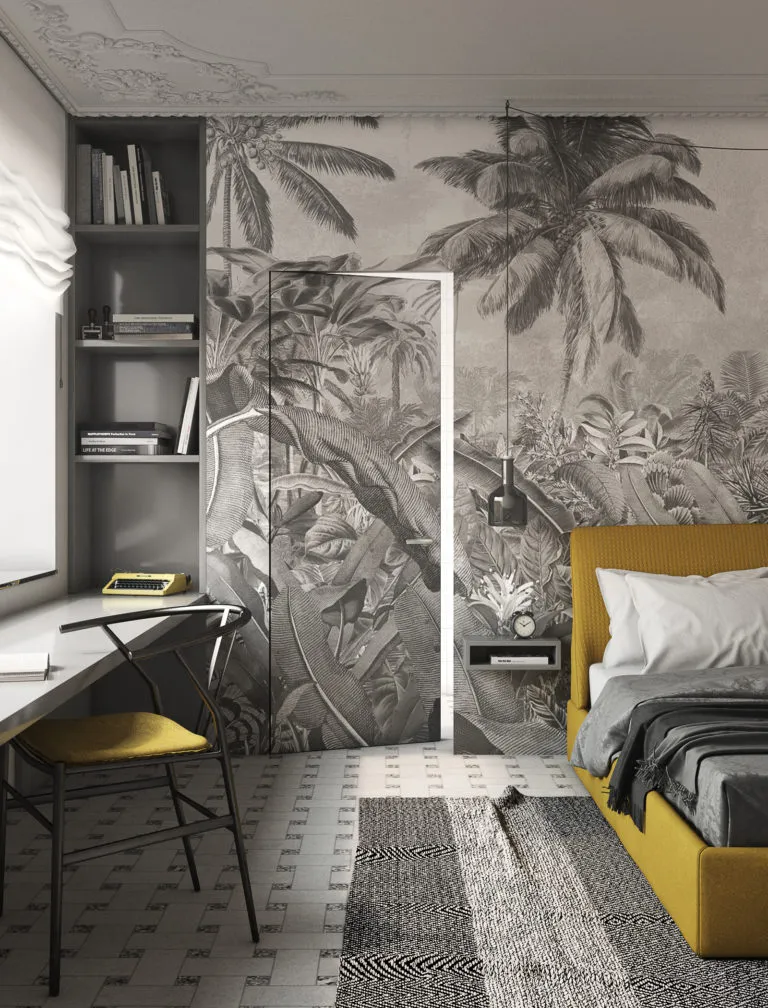
Our Absolute collection has been designed to be fully compatible with this type of product.
The flush-to-wall systems are made of pocket door systems without external finishes such as jambs, architraves or frames, permitting the complete integration of the openings in the masonry, and most importantly without interrupting the wallpaper’s pattern, giving continuity to the structure.
